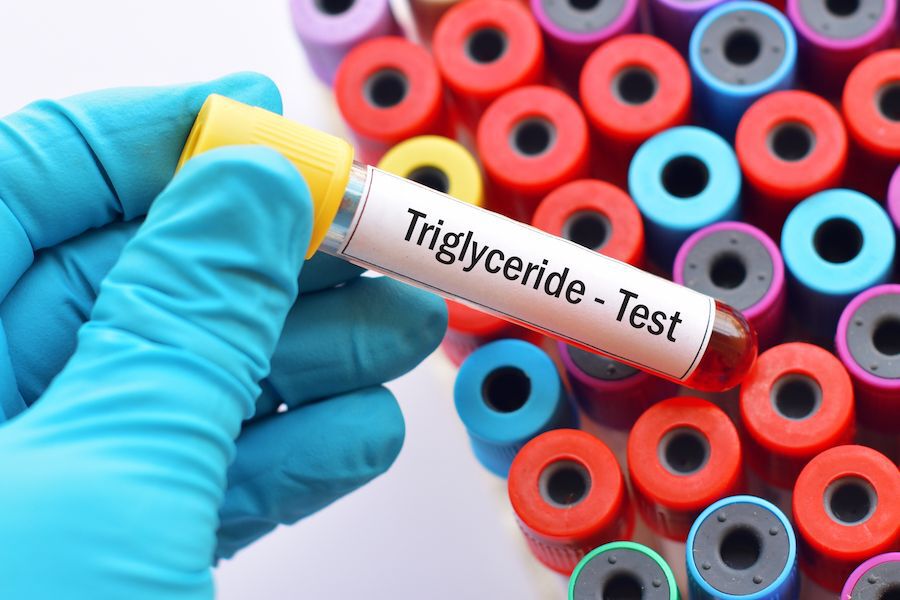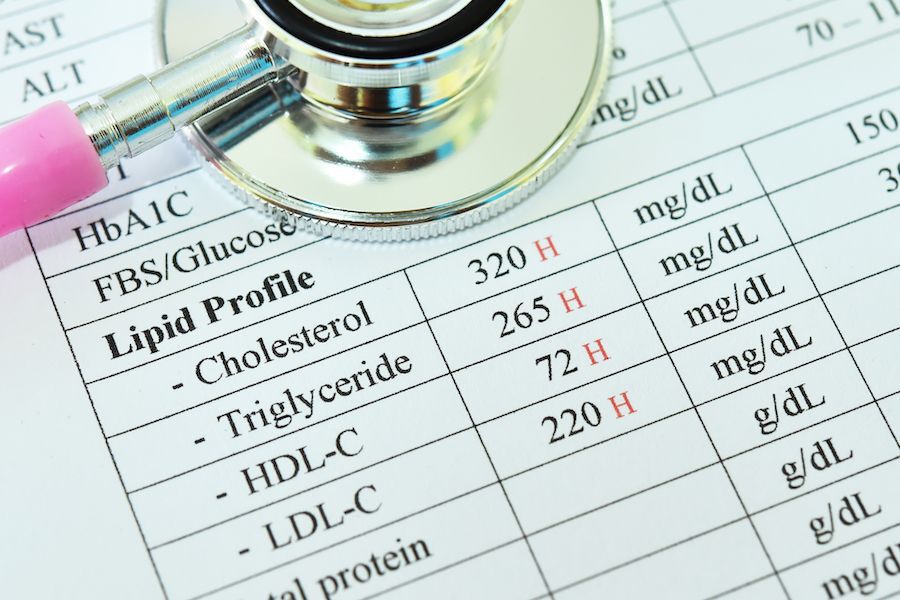What is dyslipidemia?

Dyslipidemia is a problem with your cholesterol or triglycerides. You could have:
- High levels of "bad cholesterol" (this is also called "hyperlipidemia")
- Low levels of "good cholesterol"
- High levels of triglycerides, or
- A combination of these problems
What are cholesterol and triglycerides?
Cholesterol
There are a few different kinds of cholesterol, but the main ones are:
- LDL ("bad cholesterol") is the cholesterol that can form plaques or blockages in your arteries which can cause a heart attack or stroke.
- HDL ("good cholesterol") is the cholesterol that is collected from your body and taken back to your liver where it can be eliminated. Having high good cholesterol helps protect you from heart attacks and strokes.
Triglycerides
Triglycerides are a combination of sugar and fat that can be used for energy. But if your level is too high, it can also increase your risk of heart attacks. High triglycerides can sometimes also mean that you are at higher risk for developing diabetes.
What level should my cholesterol and triglycerides be?
- Your total cholesterol should be less than 200.
- Your LDL cholesterol should be less than 100.
- Your HDL cholesterol should be more than 40.
- Your triglycerides should be less than 150.
What causes it?

Several things can cause problems with cholesterol or triglycerides, and it is usually a combination of:
- Genetics
- Being overweight or obese
- Not getting enough exercise
- Drinking too much alcohol
- Unhealthy diet
- Thyroid problems
- Diabetes
What can I do about it?
Lose weight
- If you are overweight or obese, losing weight can decrease your cholesterol and triglycerides.
- You should make a goal to lose 10% of your body weight to get the benefits.
Exercise
- Exercise decreases your LDL (bad cholesterol) and triglycerides and increases your HDL (good cholesterol).
- You should get a minimum of 150 minutes of exercise per week (or 30 minutes daily 5 times a week).
- Do an exercise you enjoy so that you will be more likely to stick with it.
- Good choices include walking, swimming, biking, hiking, and running.
Eat a healthy diet
- Decrease or eliminate meat and dairy products from your diet.
- Avoid unhealthy fats such as fried foods, margarine, and processed foods.
- Decrease processed sugar found in sweets, sodas, fruit juices, and many packaged foods.
- Eat healthy fats such as avocados, nuts, seeds, and olive oil.
- Eat omega 3 fatty acids which are found in flaxseed, chia seeds, hemp seeds, walnuts, and some kinds of fish.
- Eat lots of high soluble fiber foods like oatmeal.
- Eat more fresh or frozen fruits and vegetables.
Stop smoking
- Smoking decreases your HDL (good cholesterol) and increases your triglycerides.
- If you are not a smoker, you should stay away from second-hand smoke.
Consider supplements and herbs
- Fish oil has omega 3 fatty acids that decrease your triglycerides and increase your HDL (good cholesterol). Start with 1-2 grams/day.
- Psyllium is a fiber supplement that can decrease your LDL (bad cholesterol). Start with 1 teaspoon/day and slowly increase to 4 teaspoons/day.
- Plant sterols decrease how much cholesterol you absorb from your diet. Take 1 gram/day before meals. You can take plant sterols as a supplement.
- Garlic may decrease your LDL (bad cholesterol). If you like garlic, try to eat 1 clove per day in foods.
Print Version
References/Resources
Andersen RE, Wadden TA, Bartlett SJ et al. Relation of weight loss to changes in serum lipids and lipoproteins in obese women. Am J Clin Nutr 1995;62:350-357
Anderson JW, Davidson MH, Blonde L, et al. Long-term cholesterol-lowering effects of psyllium as an adjunct to diet therapy in the treatment of hypercholesterolemia. Am J Clin Nutr 2000;71:1433-1438
Glenney SS, Brockemer DP, Ng AC et al. Effect of exercise training on cardiac biomarkers in at-risk populations: A systematic review. J Phys Act Health 2017;6:1-30.
Jakobsen MU, O’Reilly EJ, Heitmann BL et al. Major types of dietary fat and risk of coronary heart disease: a pooled analysis of 11 cohort studies. Am J Clin Nutr. 2009;89:1425-1432.
Kerckhoffs DAJM, Brouns F. Hornstra G, et al. Effects on the human serum lipoprotein profile of beta-glucan, soy protein and isoflavones, plant sterols and stanols, garlic, and tocotreinols. J Nutr 2002;132:2494-2505
Kominos, Vivian. (2017). Dyslipidemia. Retrieved from /program/IMR_2019/integrative_cardiology/dyslipidemia/1.html
Kris-Etherton PM, Zhao G, Binkoski AE et al. The effects of nuts on coronary heart disease risk. Nutr Rev 2001;59:103-111
Lichtenstein AH, Appel LJ, Brands M et al. Diet and lifestyle recommendations revision 2006. Circulation 2006;114:82-96
Moreyra AE, Wilcon AC, Koraym A. Effect of combining psyllium fiber with simvastatin in lowering cholesterol. Arch Intern Med 2005;165:1161-1166.
Parks EJ, Hellerstein MK. Carbohydrate-induced hypertriglyceridemia: historical perspective and review of biological mechanisms. Am J Clin Nutr. 2000;71:412-433.
Rakel, D. (2017). Integrative medicine. Location: Publisher.
Other links and resources:
nutritionfacts.org is a website with short videos reviewing scientific research on nutrition in an easily-understandable and interesting format. You can search videos by topic or disease.
https://nccih.nih.gov/health/providers/digest/cholesterol has links to informative articles for patients on hyperlipidemia including lifestyle management
University of Wisconsin Family Medicine has links to handouts for patients on non-drug ways of improving cholesterol
Mayo Clinic Website has a section on lifestyle management of high cholesterol
Patient Education Materials
- Acupuncture
- ADHD
- Allergic Rhinitis
- Anxiety
- Aromatherapy
- Asthma
- Autism
- Back Pain
- Biofeedback Therapy/Training
- Breathing Techniques
- Cancer Symptoms
- Chiropractic
- Constipation
- Depression
- Diabetes
- Eczema
- Elimination Diet
- Fibromyalgia
- GERD
- Headache
- Healthy Diet
- Healthy Weight / Obesity
- Heart Disease
- High Blood Pressure
- Inflammatory Bowel Disease
- Insomnia
- Irritable Bowel Syndrome (IBS)
- Massage Therapy
- Meditation
- Menopause
- Menstrual Disorders
- Osteoarthritis
- Physical Activity
- Probiotics
- Progressive Muscle Relaxation
- Rheumatoid Arthritis
- Supplements
- Tai Chi
- Yoga